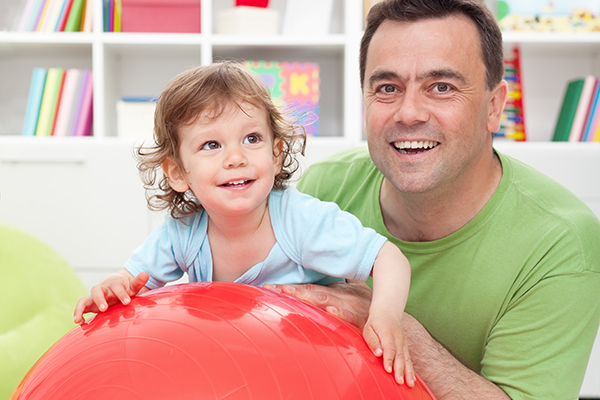Sensory Processing & How Occupational Therapy Helps
BY AMY HENGSTEBECK, OTRL
KCC Director of Occupational Therapy & Sensory Programs
Occupational Therapist
Sensory processing refers to the way the brain registers and utilizes all the sensations coming from within the body and from the external environment. It’s how we perceive our surroundings, the people and physical objects in it, how we relate our bodies to them, and how they relate to each other.
Because our brains use information about sights, sounds, textures, smells, tastes and movement in an organized way, we assign meaning to our sensory experiences, and know how to respond accordingly.
Children with sensory processing disorders are unable to appropriately manage this input, making it challenging for them to figure out what is going on inside and outside of their bodies. As a result, a child may avoid confusing or distressing sensations, or seek out the sensation to find out more about it. Because these kids cannot rely on their senses to give them an accurate picture of the world, they are unsure how to respond, and may have trouble learning and behaving appropriately.
Pediatric sensory-processing treatment sessions often look like play and seem that way to the child. The goal of most sessions is to organize the child’s sensory systems and teach the child how to process their environment appropriately.
Equipment and activities in therapy can include swings, obstacle courses, scooter boards, messy play (shaving cream), slides, “crashing” activities (jumping in a ball pit), heavy work (carrying weighted objects), handwriting exercises and fine-motor activities.
Parents can help by implementing a home program in the child’s natural environment. Activities could include navigating obstacle courses; crashing into pillows; swinging in a blanket; rolling up in a blanket like a burrito; playing with rice, dry beans, or sand in a container; carrying heavy objects around, such as laundry or groceries; giving bear hugs and deep squeezes; bouncing on a yoga ball; striking yoga poses; and doing animal walks.
The idea of sensory processing therapy is to employ carefully selected therapeutic sensory experiences and physical interaction to enhance sensory processing. We want to help the children to improve learning, behavior and quality of life.
